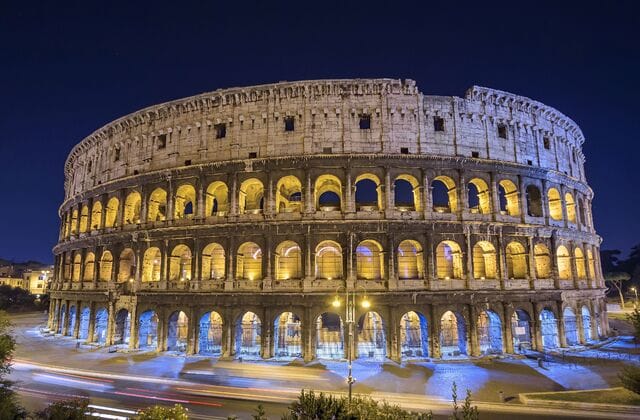Why Are These Called Landmarks Anyway?

Have you ever wondered why some buildings become world-famous landmarks while others, even those designed by brilliant architects, are never recognized? The answer often is because of something called authenticity. A structure doesn’t just earn landmark status because of its size or beauty, it must carry deeper meaning, rooted in cultural identity and history.
“A prime example of this is the Pyramids from Egypt (M, 2024).” Pictured in Figure 1, these inspiring structures have stood the test of time because they are deeply connected to Egypt’s history, symbolizing the creativity and brilliance of an ancient civilization. Their purpose, construction techniques, and alignment with Egyptian beliefs make them timeless, which is why they are one of the Seven Wonders of the Ancient World.
Similarly, the Eiffel Tower is not just an iron structure dominating the Parisian skyline. Beyond being the tallest building in Paris at the time, it was a memorial for the 100 year celebration of the French Revolution because it was such a key part of what shaped France into a better country (M, 2024). Its design was bold, breaking away from traditional French architecture, and its addition of an elevator allowed tourists to view the city from above which is what continues to attract millions today as seen in Figure 2.
So, what does it take to design a landmark? If you're dreaming of creating an iconic structure for your home country, here’s a step-by-step guide:
Dummies guide to designing a landmark
Step 1: Keep It Simple – A landmark should be unique yet adaptable, ensuring it remains relevant as technology and culture evolve (Welles, 2020).
Step 2: Use Durable Materials – Landmarks must endure for generations. The materials should withstand harsh climates and the number of people who will walk in and out of it all those years.
Step 3: Incorporate Culture and History – A landmark tells a story. Cultural significance gives the building its soul and ensures people connect with it.
Bonus: Make It Unforgettable - People should love it enough to travel miles just to see it. A landmark isn’t just built, it’s felt (Pham, 2020).
What iconic structure would you design for your country? Let’s create the landmarks of the future!
Sources:
Design Museum Editors. (n.d.). The making of a landmark. Design Museum. https://designmuseum.org/building
M, K. (2024, January 15). Landmark buildings and their historical significance. RTF | Rethinking The Future. https://www.re-thinkingthefuture.com/travel-and-architecture/a11893-landmark-buildings-and-their-historical-significance/
Pham, H. (2020, April 17). Designing City identity with landmarks. Medium. https://ngochuy141198.medium.com/designing-city-identity-with-landmarks-a8ac5267795
Welles, H. (2020, August 20). Designing structures that become local landmarks. Design Ideas for the Built World. https://caddetailsblog.com/post/designing-structures-that-become-local-landmarks
List of Figures:
Figure 1 - Pavone, S. (n.d.). The Colosseum in Rome, Italy [Photograph]. Shutterstock. https://www.ranker.com/crowdranked-list/historical-landmarks-to-see-before-i-die
Figure 2 - Berehulak, D. (2024, August 31). The Eiffel Tower with Olympic rings [Photograph]. The New York Times. https://www.nytimes.com/2024/08/31/world/europe/olympic-rings-eiffel-tower.html




